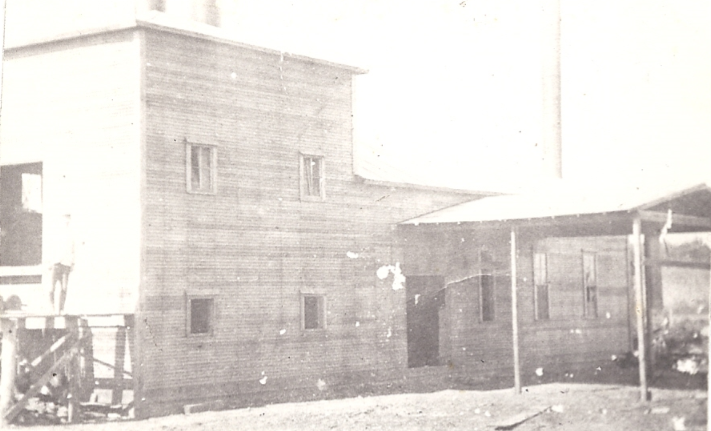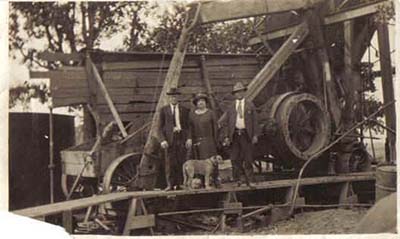
Big Indian Oil Well, Callisburg, Texas -
Courtesy of: Morton Museum of Cooke County
Callisburg is eleven miles northeast of Gainesville in eastern Cooke County. The town was near the Butterfield Overland Mail route and on the Mormon Trail. The community was named for blacksmith Samuel Loranzus Callis, the first settler in the area, who drilled a water well for the public. Callis was appointed the settlement's first postmaster in 1873 when a post office was established in Billy Rousseau's dry-goods and grocery store.
Then years later, Callisburg reported a population of 300, a school, and some twenty businesses, including a steam gristmill-cotton gin. By 1902, Callisburg's population had declined to about 110, and its post office had closed. At this time, Callisburg experienced a brief boom when residents thought an electric rail line was to be built between Gainesville and Sherman and Callisburg was to be used as the headquarters for this line, but the project never developed and the boom was over by 1905.
In 1918, Irene Hathaway, a single, traveling saleslady for an encyclopedia company from Kansas City appeared in the county where she learned from a prospective oilman of rumors about tremendous underground reservoirs of petroleum just waiting to be found in northeastern Cooke County.
In 1922, she returned with representatives of the Big Indian Oil Company who obtained leases and began drilling on the Bud W. Davis farm near Callisburg. Two years passed with no luck and company officials were preparing to abandon their leases in early November of 1924, but Hathaway persuaded them to continue for a few more months even promising to pay the field workers from her own purse.
Just a few days later, on November 9, 1924, Cooke County's first producing oil well came in drilled by C.A. Doudrick's Big Indian Oil Company heralding the beginning of a multi-million dollar industry and a new life style for the surrounding farm community. The discovery well continued to produce until 1970.
In an interview, Mr. Davis stated that thousands of people flocked to the well site. He made over $1,000 leasing lots for concession stands selling hamburgers and cold drinks. The Gainesville Daily Register sold more than 1,400 copies of its extra edition on that Sunday and reported a carnival atmosphere as everyone came to see the new discovery.
An historical marker commemorating the event is located next to the Callisburg Community Club.
Early Settlers
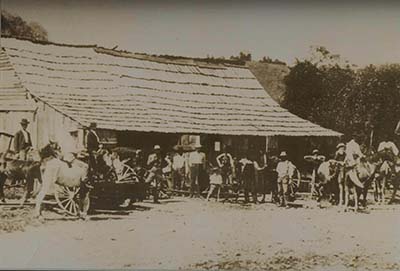
Sam Callis' Backsmith Shop, Callisburg, Texas -
Courtesy of Callisburg Community Club
Early settlers in the area include Jim K. Hogan who was one of the freighters operating out of Sherman. Levi Harrison built three adjoining stores, a dry-goods store, grocery store, and a drug store run by Dan Stover. Sam Hargis built the first cotton gin and grist mill. The little community began to flourish and at one time had as many as eight businesses, houses, three saloons, a wagon yard, grist mill and cotton gin. There were as many as three grist mills in the area and three more cotton gins were built over the years. The last one was owned and operated by Cal Summitt and Will Lister and burned in 1924.
Sam Callis dug a well near his blacksmith shop in the early 1870’s and soon after a man named Uncle Billy Rousseau operated a dry goods & grocery store previously built by Levi Harrison. In 1873, a post office was established in the back of Billy Rousseau’s store. Sam Callis was the first postmaster serving from 1873 to 1883 and Billy Rousseau was the second postmaster serving from 1883 to 1893. The post office was discontinued in 1902.
Dr. W.S. Miller was one of the first doctors in the community and built most of the houses in Callisburg. In 1890, Billy Stinson built a horse powered cotton gin half a mile north of the town and cotton was brought to Callisburg for ginning. The town came into being long after the Indian raids were over in Cooke county but evidence shows that Indians frequented the farm of Bill Henderson just north of the town where Indian mounds could be found.
Early travel through the Callisburg community included the Morman trail and Butterfield Stage Line. Callisburg had a brief boom in 1902 when first efforts were made to build an electric interurban rail line between Sherman and Gainesville passing east through Callisburg. The movement resulted in the building of a dump by John King of Gainesville. There are still signs of where it began on the farm of Dean and Frances West.School
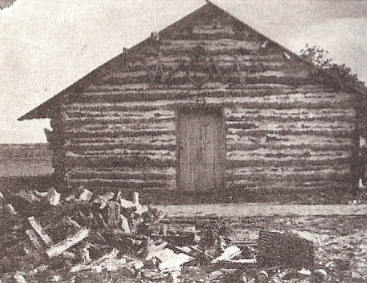 Photograph of Old Woodman of the World in Callisburg built in early 1870’s
reprinted from Cooke County History:
Photograph of Old Woodman of the World in Callisburg built in early 1870’s
reprinted from Cooke County History:
Past and Present
Old grist wheel, Callisburg Photo courtesy of Janie Hollandsworth
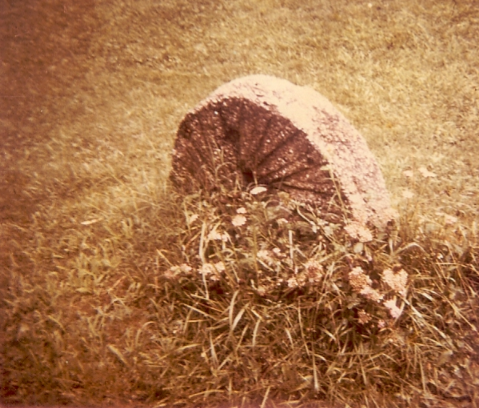
The first school in the Callisburg vicinity was in the 1870’s. It was called Mountain Grove and nicknamed Buzzard Roost and was located about two miles southeast of Callisburg and made of logs.
The first school in Callisburg was located southeast of where the Community Center is now and built in 1888. Trustees were J.K. Hogan, Levi Harrison, and R. Perkins.
In 1912, Callisburg District 13 bought four acres of land one-fourth of a mile northwest of Callisburg and built a two story building for use as a school and for Woodmen of the World. School classes were held in two big rooms downstairs and the Woodmen used a big outside circular iron staircase to get to their upstairs part.
A new high school was built in 1953. In 1968, Callisburg consolidated with Rad Ware School in Woodbine with over 800 students in both elementary and high school.
The elementary school grades Pre-K through fifth is still located at the Woodbine campus. A new High School and Middle School facility was completed in 2009 for grades 6 through 12. Over 1,100 students attend Callisburg schools today and the district covers 27 square miles.
Old cotton gin in Callisburg, burned in 1924 - Photo courtesy of Janie Hollandsworth